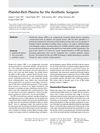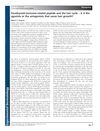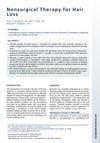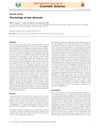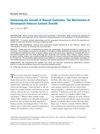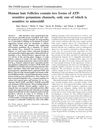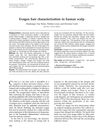Hair Biology
August 2018
in “
Facial Plastic Surgery Clinics of North America
”
hair growth cycle hair follicle melanocytes testosterone dihydrotestosterone DHT minoxidil finasteride dutasteride platelet-rich plasma PRP bimatoprost ophthalmic solution Latisse spironolactone parathyroid hormone-related peptide antagonists cimetidine cyproterone acetate estrogen/progesterone therapy antiandrogen Rogaine Propecia
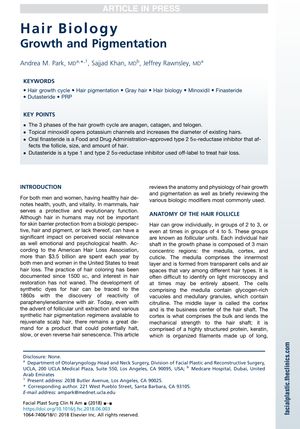
TLDR The document explains hair biology, the causes of hair loss, and reviews various hair loss treatments.
The document from 2018 provides a comprehensive review of hair biology, detailing the hair growth cycle, pigmentation, and the anatomy of the hair follicle. It discusses the psychological and social impacts of hair loss and the significant expenditure on hair loss treatments in the United States. The paper outlines the role of melanocytes in hair color and how factors like genetics, diseases, and medications can lead to changes in hair color and condition. It highlights the conversion of testosterone to dihydrotestosterone (DHT) as a key factor in hair loss, with DHT affecting the hair growth cycle. Various treatments for hair loss are reviewed, including minoxidil, finasteride, dutasteride, platelet-rich plasma (PRP), and bimatoprost ophthalmic solution (Latisse), along with their mechanisms of action. Alternative treatments such as spironolactone, parathyroid hormone-related peptide antagonists, cimetidine, cyproterone acetate, and estrogen/progesterone therapy are also discussed for their effects on hair growth and antiandrogen properties. The document does not include specific study numbers or results but provides an overview of the treatments and their uses in hair-related conditions.
